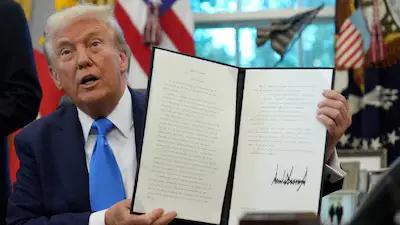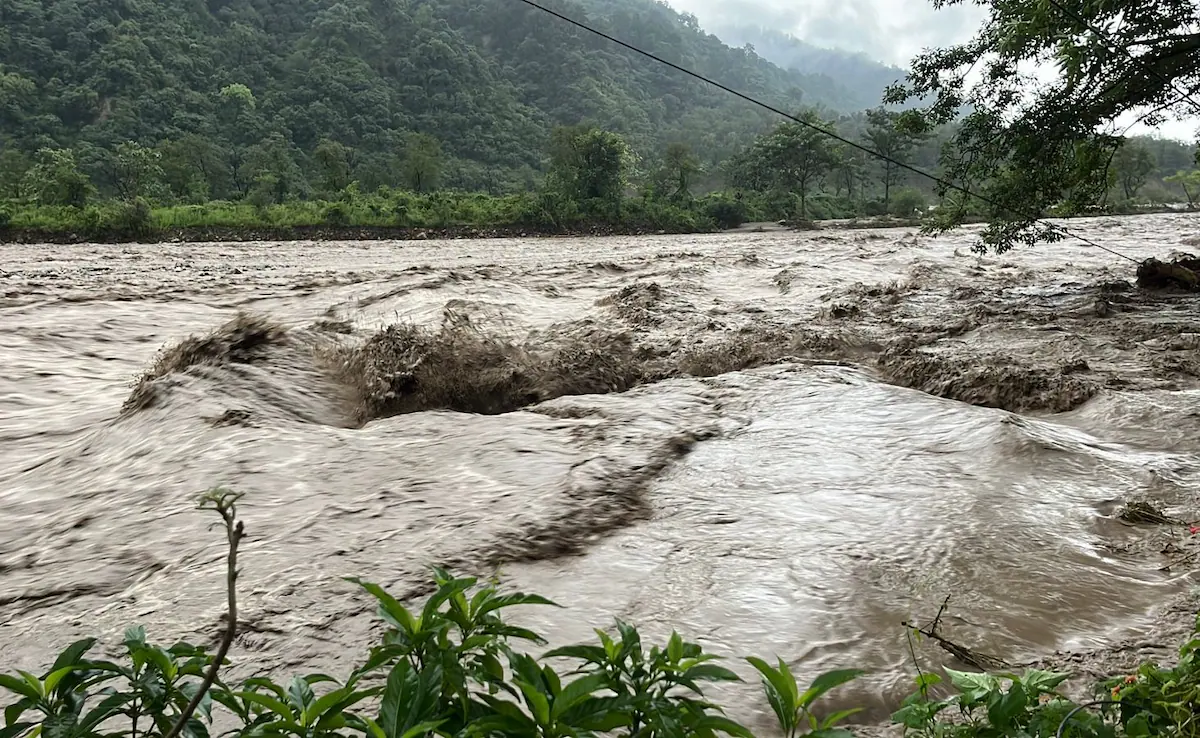U.S. Slaps India with 50% Tariffs: A Diplomatic and Economic Shock
In a dramatic escalation, the United States announced an additional 25% tariff on imports from India—bringing the total to a staggering 50%—as punishment for India's continued purchase of Russian oil. This decision is reshaping the contours of global trade, pressuring key Indian industries and testing diplomatic ties between two longstanding partners.
Why the Tariff Hike?
President Donald Trump cited "national security" concerns under the International Emergency Economic Powers Act (IEEPA), asserting that India’s continued import of Russian oil posed an "unusual and extraordinary threat" to U.S. foreign policy interests amid the Ukraine conflict Al JazeeraThe White House. The move adds to a baseline of 25% tariff previously imposed, culminating in one of the highest rates the U.S. has levied on any trading partner ReutersIndiatimesWikipedia.
Timeline & Legal Framework
-
April 2025: Trump rolled out the so‑called "Liberation Day" tariffs, introducing a 10% baseline tariff on most imports and country-specific “reciprocal” rates scheduled from April 9 Wikipedia.
-
Subsequent Delays: Implementation was deferred amid global backlash and pending negotiations The Times of IndiaWikipedia.
-
August 1, 2025: A 25% tariff on Indian goods was announced, with an added penalty for continued Russian oil purchases WikipediaThe Times of IndiaThe Economic Times.
-
August 6–7: Final decision confirmed—tariffs to total 50%, effective August 27, with transitional relief for shipments in transit until mid‑September IndiatimesThe Washington PostReutersAP News.
Economic Fallout
-
Export Industries Recoil: Analysts estimate that the gem and jewellery sector, labeling the move “doomsday,” is considering relocating manufacturing to low‑tariff countries like the UAE and Mexico to retain U.S. market access The Times of India.
-
Growth Hit Ahead: Morgan Stanley forecasts a possible drag of up to 80 basis points on India’s GDP over the next year unless mitigating policies are rolled out The Economic Times.
-
Strategic Breeding Ground for Disruption: With exports to the U.S. valued at approximately $87 billion, the potential fallout spans sectors such as pharmaceuticals, automobiles, textiles, seafood, and engineering goods ReutersThe Economic TimesThe Times of IndiaWikipedia.
Diplomatic Tensions & Next Moves
-
Tie at a Breaking Point: Al Jazeera describes the situation as the lowest point in U.S.-India relations in years. Trump’s approach—prioritizing "onshoring" over "friend-shoring"—highlights a pragmatic domestic focus over strategic alignment Al Jazeera.
-
India’s Counsel and Countermeasures: New Delhi has decried the move as "selective and unfair," noting that other countries trading with Russia aren’t similarly targeted. Indian officials are weighing options like reducing Russian oil imports, deepening diplomatic outreach, and aligning with BRICS partners for coordinated responses IndiatimesReuters.
What Lies Ahead
1. Negotiations Revived
India and the U.S. may resume confidential talks, with Washington potentially offering relief on sectors like farm produce, energy, and defense hardware in return for trade concessions Reuters.
2. Diversification of Supply Chains
To counter rising costs, Indian exporters might shift operations—especially for gems and jewelry—to more tariff-friendly nations.
3. Policy Moves in India
The government could ramp up reforms, provide subsidies, and seek alternate trade routes via BIMSTEC or ASEAN markets to buffer the shock.
4. Legal Ramifications
Trump’s sweeping tariff package continues to face legal scrutiny domestically, with federal courts already questioning the administration’s authority under IEEPA Wikipedia.
Conclusion
The newly imposed 50% tariff on Indian goods marks an aggressive shift in U.S. trade policy—one that jangles economies and disturbs diplomatic balances. For India, navigating this storm will require diplomatic creativity, industry adaptability, and strategic foresight. How policymakers and businesses respond will shape the trajectory not just of bilateral trade, but regional economic realignments in South Asia and beyond.









